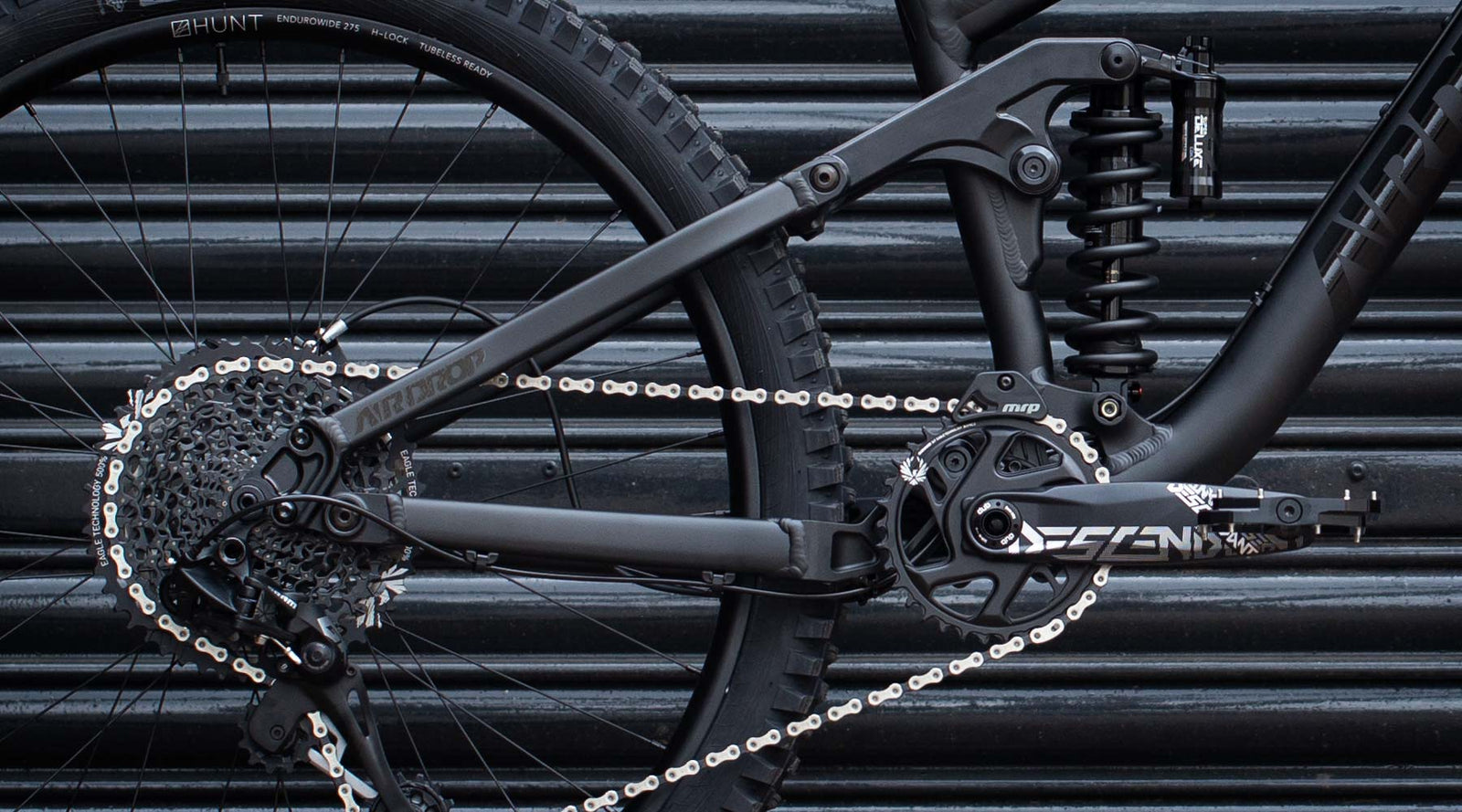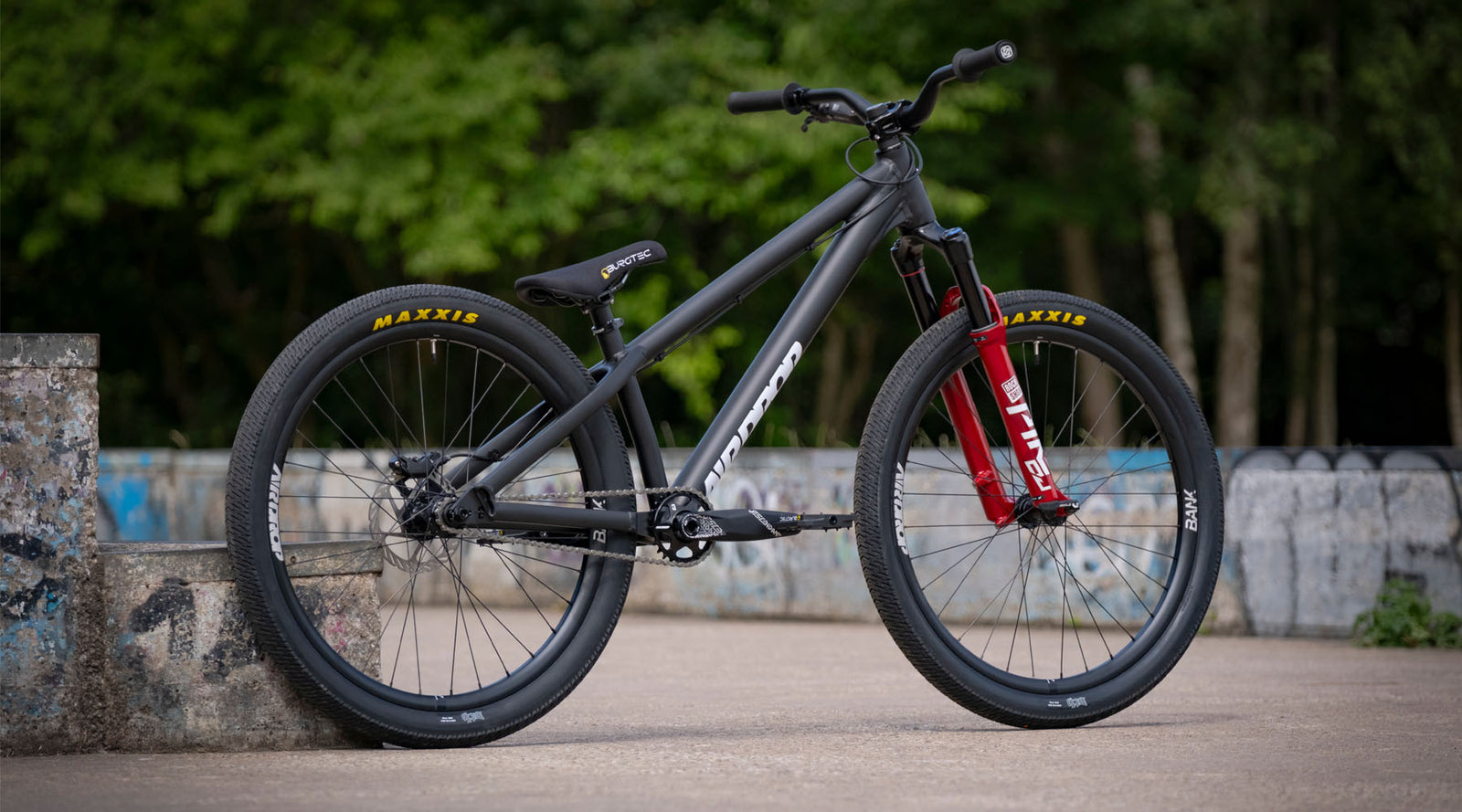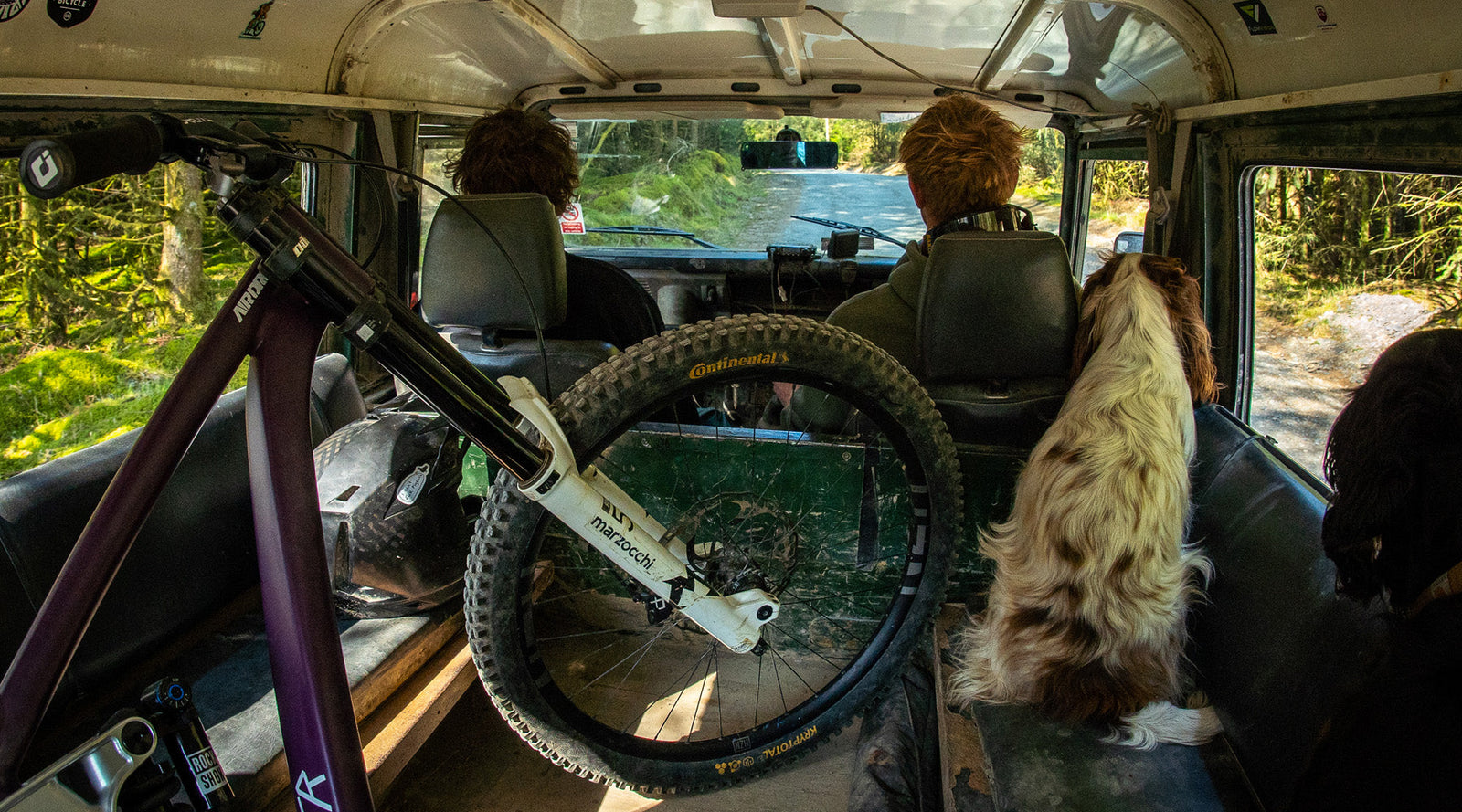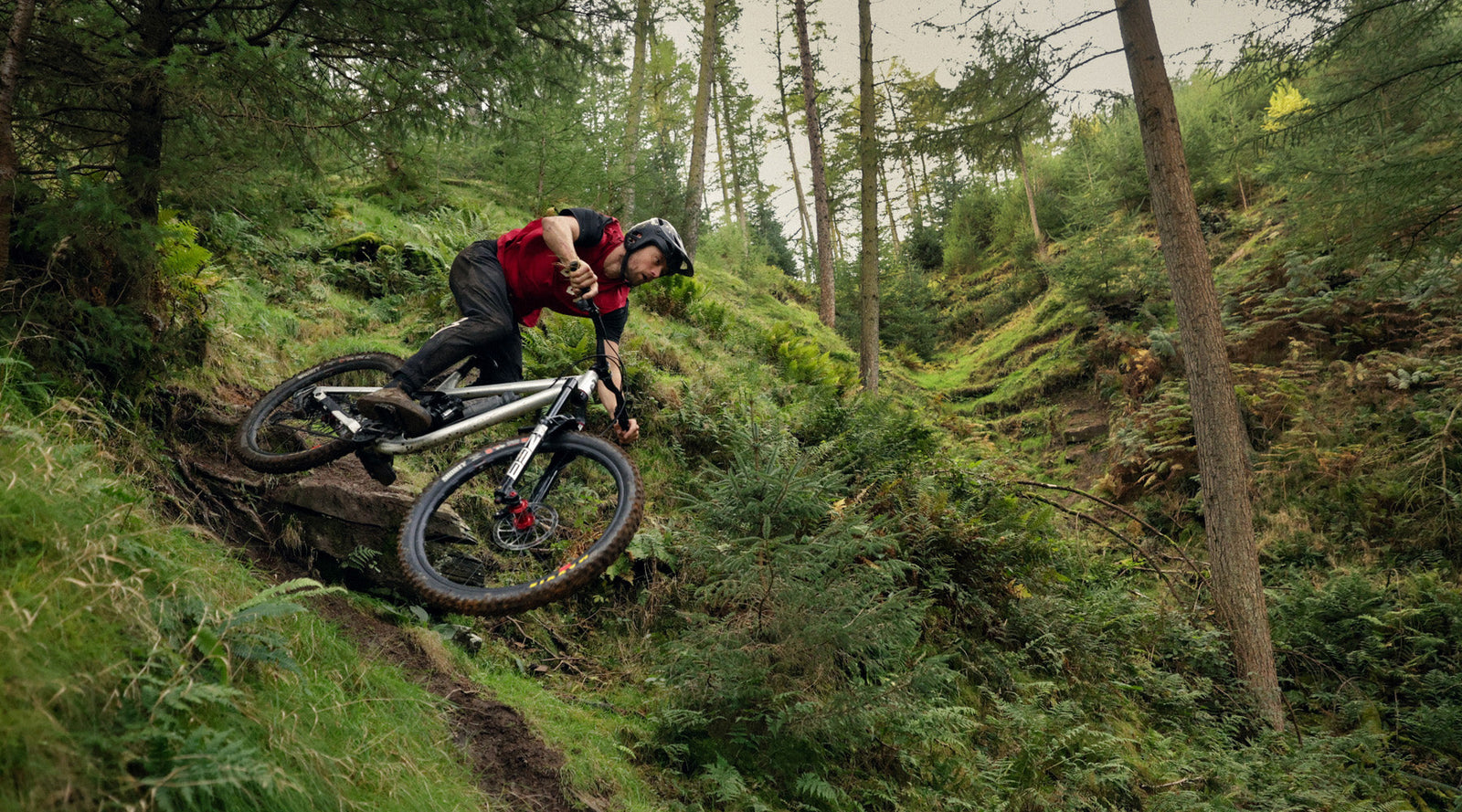
Edit v3 Kinematics
July 11, 2019
In the first of our new tech blog series, we're getting into the details of the Edit v3's kinematics.
It's been a few months since the Edit v3 launched, and we've been bowled over by the response. The last few months have been pretty wild with both of us working flat out building bikes. At this point we've sold through 85% of the first batch (check up-to-date availability here). That's faster than we expected but we have another batch in production which should be arriving with us early in September, and yet another batch coming in the Autumn.
The original plan was to produce a series of detailed articles delving in to the nitty-gritty of the Edit's development story; to give some insight into the bike's development and the thought process behind all the design decisions. Unfortunately we were just too busy building bikes for customers so it never happened - but better late the never I guess. So here we are for the first in a series of blog posts getting geeky and talking Edit v3 kinematics.
For anyone not already familiar with the concept, kinematics by definition is "the study of the motion of mechanical points without consideration to the forces applied". In terms of bike design this relates to the relationship between pivot locations and how they affect suspension behaviour. So in other words this is about how we designed the Edit's suspension to work, independent of any particular damper.
The Perfect Recipe
It's easy to get sold the idea that there's a Holy Grail layout - the perfect bike. A lot of bike brands don't bother to talk about their design's kinematics in detail but take a closer look at those that do and you'll detect a little manipulation of the numbers and a lot of marketing jargon. The truth is that the perfect layout doesn't exist. Just like any other area of design, kinematics are a question of compromise; it's about delivering the suspension characteristics you want within a set of constraints. Every layout has its strengths and weaknesses. One brand's desired characteristics will vary wildly from the next. Don't let anyone tell you their design is "the best." When designing (or buying) a bike like the Edit v3, you need to make an educated decision based on your own preferences and the characteristics you're looking for.
The Perfect Layout Doesn't Exist.
Kinematics is without a doubt an incredibly complex problem and one that is constantly evolving; there is always more to learn. We believe the secret to well executed kinematics is the ability to create a layout with the fewest design compromises and then be able to manipulate the pivot locations to deliver our preferred characteristics... but more on that later.
Our Layout
We use a Horst Link layout, which is a type of four-bar linkage defined by the rearward pivot being on the chain-stay (as opposed to the seat-stay as it is on other four-bar designs). Our layout comprises of a pair of seat-tube mounted rocker plates driving a vertically mounted shock. The Horst link is one of the most commonly used layouts, and for good reason.

Without delving in too deeply just yet, our reasoning behind using a Horst link layout can be summarised in just a few points:
- Due to the axle not being directly connected to main frame and revolving around an instant centre it allows us to manipulate pivot locations in a way which favour our preferred characteristics. In particular Anti-rise vs Anti-squat.
- A Horst link with a vertical mounted shock is one of the most simplistic layouts in terms of engineering solutions. Mounting the shock close to the BB (which is already an inherently strong area of the frame) is much simpler than mounting elsewhere - in the middle of the downtube for example.
- A Horst link delivers more consistent, predictable suspension performance compared to dual link platforms with a similar layout. We think it's important to have suspension that's predictable throughout it's travel.
- Mounting the shock vertically leaves plenty of fresh air in the front triangle for mounting a bottle.
Looks Like A Session
Something we hear a lot is "just another Horst link bike", the ever popular "looks like a session" or our personal favourite, "it’s a Transition ripoff". The Horst link might be one of the most widely used suspension platforms, but all brands have a different interpretation of the best layout; no two bikes share the same pivot locations, geometry or kinematic attributes. The Edit v3 might indeed look like another bike but it won't ride like it; the way the Edit rides is unique to Airdrop Bikes.
Anyhow in my opinion both the Session and Transitions are very good bikes so our bikes being compared to those in my mind is a compliment. And in reality all bikes now are designed around the same or at least very similar standards and clearances; be that shock length, tyre width, wheel size or chain-line so it's no coincidence that bikes are starting to look superficially similar.
Striving to be unique purely to differentiate ourselves from the next brand doesn’t sit right with us; that's just borne out of a desire from the marketing department to stand out. From the outset we chose to use a tried and trusted layout in the Horst link, and to invest our energy into making the best bike we can. The progression is clearly visible rom the Edit v1 through the v2 and now in the new Edit v3.
How The Edit Rides
The brief for the Edit was to be that one bike you ride all the time. Capable of mixing it up in the gnarliest of terrain, fast, confidence inspiring, but most of all fun. That meant the correct level of support to give you that poppy feel with either a coil or air shock, rear-wheel travel that's consistent and stable, and plenty of traction. For us riding bikes is about smiles not seconds.

In terms of kinematics we were looking for a few key things:
- A progressive leverage curve that wouldn't rely on an air can full of tokens to prop it up.
- Suspension that remains active under pedalling for maximum grip on technical trails.
- Suspension that remains active under braking with increasing levels of anti-rise as the bike gets deeper into its travel.
- Suspension that's predictable throughout it's travel so you always know how the bike will behave.
Leverage Ratio
The Edit v3 has a progressive leverage curve, with a overall progression rate of 22.5%. This level of progression means riders can choose to use either Air or Coil shocks and will mean that the rider does not have to prioritise small bump compliance over mid/end stroke support. This delivers a kinematic package that is both easy to set up with a variety of shocks and damping that remains consistent throughout the travel.

A progressive leverage ratio like that on the Edit v3 translates into a fun, lively feeling bike that won't get bogged down and it means your rider input i.e. pumping will be translated into forward momentum rather than just suspension compression. As you can see from the graph, the Edit v3 has 5mm more rear wheel travel (155mm) than the v2 (150mm) and is designed to be a little more progressive, which reflects the increasing prevalence for riders to select a coil shock. The Edit v3's kinematics offer a bit more end-stroke support and reduce the chances of a hard bottom-out on big hits.
Anti-Squat
The Edit v3 has relatively low anti-squat numbers, starting at 112% with a 32/50t ratio and 100.5% with a 32/24t ratio, then falling through the travel to 49% at 32/50t and 7% at 32/24t. This means the Edit v3 remains active when pedalling and will deliver plenty of grip on rough and technical climbs, but still has enough anti squat to resist excessive pedal bob.

We don’t really subscribe to the notion of the perfect anti squat number being 100% throughout the travel and the idea that a climb switch should never be used. In our minds the option to use a climb switch should be utilised (every shock we spec has one) and by factoring this in it allows us to make a frame that can deliver more grip while climbing, not wallow excessively and then if you're stomping on the pedals on a smooth climb, by all means reach for that lockout - that’s what it there for. As a general rule we leave the climb switch wide open most of the time when we're riding, purely because the extra grip you get from the active rear end outweighs any loss of pedalling efficiency.
Anti-Rise
The Edit v3 has reasonably low levels of anti-rise that start at 25% and increase through the travel to 49% at full compression. The Edit's suspension is almost entirely independent of braking force and will remain active under braking throughout its travel. The rising levels of Anti-rise as the bike progresses into the travel will help in harder, high energy braking scenarios.

Overview
We read a lot about mountain bike kinematics. Apart from the fact that it's our job to understand this stuff, it's just something that we're naturally interested in. The typical kinematic article is actually part of a new bike launch; it dwells almost exclusively on the benefits of the new bike's design and makes things as complicated as possible. It's amazing how they can design a bike with only benefits and no drawbacks. Sometimes it seems brands are more obsessed with their own engineering prowess and going one-up on the competition than what their bikes are like for real people to ride.
Hopefully that's not what we've done here. Our company ethos is to keep things as simple as we can, to focus on quality and that applies to everything from the design of the bikes right through to how we talk about them. The Edit v3 isn't a highly specialist racing bike. It's not all that innovative and we don't have any new acronyms to boast about. What the Edit v3 is though is an honest bike that's bloody good fun to ride, and we're extremely proud of it.
What's Next
Keep an eye on the site for the next in our new series of tech blogs, and forthcoming articles on shock options for the Edit v3, geometry and sizing. If there's anything else you'd like to know about, post up a comment below and we'll get into that too.
Shop the full range of Edit v3 frames and full bikes here.
James Crossland
James grew up in Sheffield and Wharncliffe is his local. He spent a few years guiding in NZ but now he's back, helping with all things Airdrop.
Leave a comment
Comments will be approved before showing up.
Also in Airdrop Bikes Blog

Fade Core Refresh
July 09, 2025
Rockshox recently released the Pike DJ to the new Electric Red colour. We like to make sure that we keep our bikes up to date, so we took the opportunity to give the Fade Core a bit of a refresh.

Into The Woods We Go
June 26, 2025
We took a trip down to Dyfi to catch up with Alf and get him on his new Slacker, then do a bit of digging & riding. Watch the video... Into The Woods We Go.
Read More

True North Demo Day
June 06, 2025
We've partnered up with True North Cycle Hub to give you the chance to demo an Edit MX in Wharncliffe Woods on Saturday 14th June, 2025.
Email Newsletter
Our monthly email newsletter gets you access to all the good stuff before everyone else.
